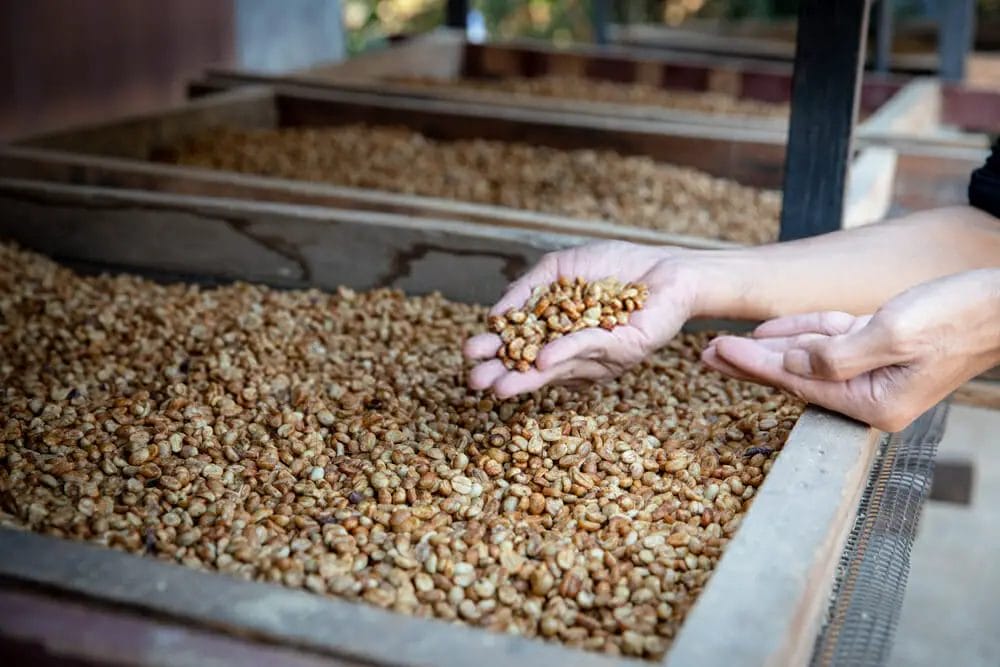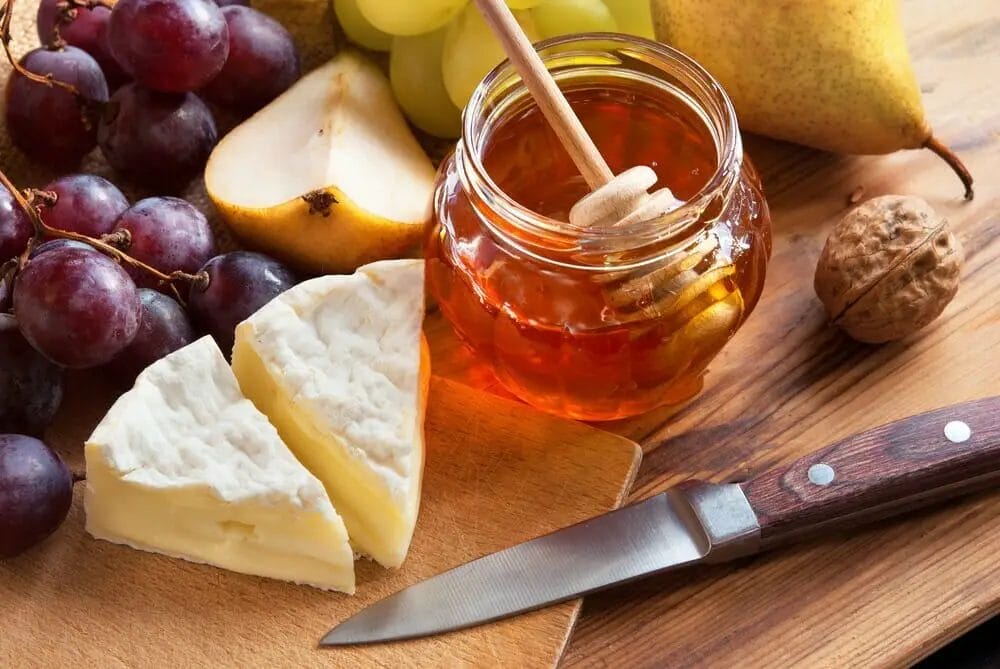All About Honey Processed Top 5 Yellow/ Red/Black Honey Processed Coffees

You might have spotted a new type of coffee the last time you visited your favourite cafe. While coffee is not something new, the techniques used to make it are not known to many.
However, you may have noticed that this coffee smells or tastes different, and it’s the result of honey processing!
But what is honey processing? How does it taste? And what does it have to do with honey?
In this article, we will go through all about honey processing. To make a good cup of coffee, there are a lot of factors to take into account.
By learning a little about honey processing, you can choose a better quality coffee and increase your knowledge of coffee itself.
So let’s get started!
What is coffee processing?
Processing is the stage in which the coffee cherries are prepared for export or roasting. It can be tough to tell the processing stages by looking at the green beans, but it’s easier to buy better coffee beans if you do know.
Many processing techniques exist, but most fall into one of these four categories: Washed, Honey Processed Natural, and Pulped Naturals.
The main difference between the different techniques is that they remove different amounts and types of fruit sugars and other compounds from the beans, which will affect the flavour and other characteristics of the resulting coffee.
In general, all processed beans start with a 'washed' process, which removes most of the fruit from the bean.
It is followed by a series of ‘drying’ techniques that dry the remaining moisture content to store it for more extended periods.
The most common methods are sun drying or using a mechanical dryer. Of course, these single-stage processing techniques are fundamental, but the different stages will make a big difference in the final product.
What is Honey Processed Coffee?
People used to lay the coffee out in the sun to dry, including the fruit (natural/dry processing), but the method has changed, and they remove the fruit by water (washed processing), and the coffee is then dried.

First, the beans are dried on huge patios, generally constructed of asphalt, on which they are spread. After that, they are switched every 30 to 40 minutes.
This process usually takes six to seven days for washed coffee. The coffee begins with a humidity of approximately 60%, and the objective is to reduce it to 11 or 12%.
Once the patio drying process is complete, the coffee is generally sent to mechanical dryers to reduce humidity further.
By this point, it is typically around 15% so that the automatic dryers will remove the remaining 4% humidity.
The Honey Process Coffee is a cross between natural/dry and washed processing. Pulping the fruit, removing the cherry skin, and drying the leftover mucilage on the patio are all steps in the coffee honey process.
The procedure is significantly more complex than washed processing. It is necessary to flip the adhesive over every hour for ten to fifteen days. This method is only for the red Coffee Cherries.
The resultant coffee will have a natural sweetness and the characteristics of a high-end washed process coffee.
They don’t have the skin of the cherry on them. Therefore they don’t have the woody tastes that dry-produced coffees might have.
They preserve some of the fruity flavours found in mucilage, although not as strongly as dry-produced coffee.
There are four styles of coffee honey processing: black, yellow, white, and red. Let us learn a little about each of them!
A mucilage remover, a mechanical machine that uses friction to remove a set amount of mucilage from the bean, is used. The style is determined by how much adhesive is removed from the beans.
White Honey
White honey coffees are often mechanically de-pulped and washed to remove the majority of the honey covering.

Around 90% of the sticky goo is removed for the white honey procedure, leaving only a thin layer of the moist, delicious substance.
Yellow Honey
Before drying, almost half of the mucilage in coffee beans is washed away.
Red Honey
Red honey processed beans will retain the majority of their honey-like covering, eliminating no more than 30-40% of their mucilage.

As a result, the seeds are visibly darker than washed coffees at this stage, coloured with an almost reddish, amber tone.
Black Honey
These honey-processed coffees are on their way to becoming a natural honey hybrid. While the skin and flesh of the coffee berry are still removed, the sticky slime that coats the seeds is left intact.
When it dries, it appears dark, ranging from a dark amber tint. It has a lovely, nutty fragrance, even as a raw bean.
Some fermentation happens in black honey processed coffee, resulting in a coffee that tastes like a cross between a natural and a honey bean.
What do these processed coffees taste like?
It gives a coffee a fruity, caramel, or burned sugar-like sweetness. Honey process coffee is fruity and jammy in flavour.
In addition, we may detect stewed stone fruit tastes, which typically have a nutty flavour to them. The intensity of these flavours will vary depending on whether the coffee is white, yellow, red, or black.
White and yellow honey is often slightly sweeter and has more body than washed coffee. On the other hand, Black honey has very jammy, delightful, somewhat fermented aromas with solid fruity tastes. You will also taste a lot of caramel in them.
Does the process involve honey?
No, so don’t be fooled by some shops. In this case, the term “honey” is just a reference to the process, not the result.
What are some of the characteristics of honey processed coffee?
The main difference between washed and honey processed coffees is that honey processing allows more time for fermentation on the beans themselves, leading to a naturally sweet flavour profile. Additionally, it increases the body of the coffee.
This process infuses more sugar into each bean than other processes. These beans are also typically sun-dried, giving them a natural sweetness.
Now that we know the colours and processes, let’s look at the top 5 honey coffees you can buy.
Organic Kona Coffee: Honey Dark
But Kona coffee is not just grown in Hawai’i but is grown worldwide, including Brazil.
These beans are grown at high altitudes on ridges and slopes with pure rainwater, often in the shade of tall trees, which aids in their low acidity.
The beans are hand-picked. The flavours are intense, with chocolate, fruit, and berries.
Costa Rica Cumbres Del Poas Black Honey
This coffee is grown at elevations of 2,000 meters on the Nicaraguan border of Costa Rica. Its production is in the city of San Ramon. Unfortunately, one kilogram of coffee only produces 37 to 45 beans, so getting your hands on some is very rare.
It has a slight bitterness, but that fades into a dark chocolate flavour with wild blackberry and black cherry notes. It offers an aroma of dried fruit, including dates and figs. It has a full-bodied taste overall.
Honey process by pure coffee club
The pure cup coffee club offers a variety of artisan coffee beans. In addition, they offer honey-processed, natural, and washed coffees.
The beans they use are grown in Colombia and Nicaragua. The beans are hand-picked and sent to the washing process in the Philippines. They only use top-grade beans of 100% Arabica.
Honey Processed by 1b Coffee
1b coffee specializes in wild and organic coffees, which means they don’t use fertilizers or pesticides. From the beans they get, they pick up to six hundred beans each harvest.
These beans are taken to their washing facility thirty miles west of India's leading coffee growing area, where they'll be washed with water heated to 140° Celsius (280° Fahrenheit). The beans are then sun-dried.
It is produced in South India, using Arabica Arabica Robusta coffee beans. The county is known for its organic coffee crop. They follow the shade-grown method of production to retain high-quality raw materials.
Honey Processed Coffee by micro-lot green coffees
It is another excellent company that produces the best honey processed coffee with the perfect taste! You can find this product here www.microlotgreencoffees.com. The coffee beans are from Chiapas, Mexico, carefully selected for quality and consistency.
You can wah the beans in water heated to 59° Celsius (138° Fahrenheit) to remove the majority of the covering. It is then sun-dried on raised drying beds.
Conclusion
Honey processed coffee tastes wonderful when properly roasted, so if you get the chance to try any, do yourself a favour and grab or make a cup. Of course, you can also try the other coffee processing methods!
I hope you enjoyed my honey processed coffee article. If you have any questions or any comments, feel free to share them with me!
Happy coffee drinking!






